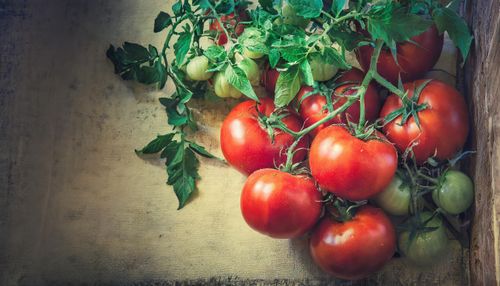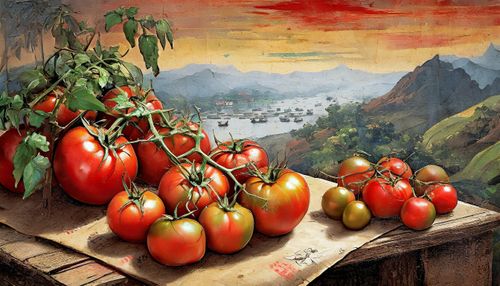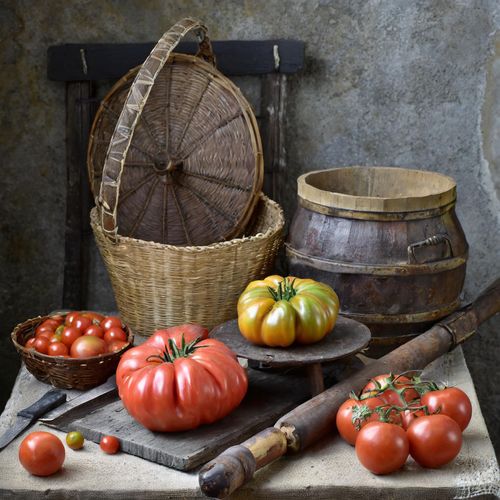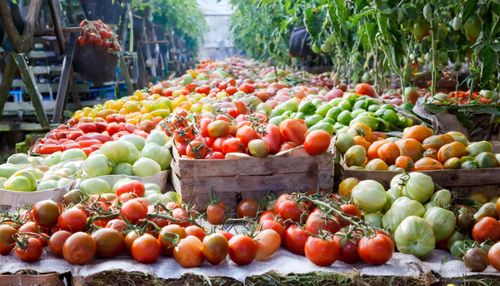The Global spread of Tomato
Explore the rich history of tomatoes (Solanum lycopersicum), a versatile crop cultivated extensively in South America and its worldwide spread.

The history of tomatoes is rich and varied, with its origins dating back to ancient times. This popular fruit, often taken for a vegetable, has a fascinating story that spans continents and centuries.
The process of domestication and cultivation of tomatoes played a crucial role in shaping the global production of this crop. The cultivation of tomatoes was not only limited to South America but also spread throughout Europe and beyond, contributing to its widespread popularity.
The domestication of tomatoes involved the careful selection and cultivation of the wild tomato, transforming it into a valuable agricultural crop. This process allowed for the harvest and development of various tomato varieties that suited different culinary and agricultural needs.
Origins in the Americas
Tomatoes have a long and interesting history that begins with the origins of the wild tomato in South America. The wild tomato, scientifically known as Solanum lycopersicum, is a member of the nightshade family (which includes other popular crops such as potatoes, eggplants, and chili peppers) and is native to western South America, particularly in Peru. The wild tomato was first domesticated by the indigenous people, such as the Aztecs and the Incas, who recognized its potential as a food crop. It is from these regions that the modern tomato evolved, eventually spreading across the globe.
Throughout history, South America has remained a significant region for tomato cultivation, with countries like Peru and Chile, a place where tomatoes come to be a major crop. contributing to the global production of tomatoes. The favorable climate and agricultural practices in these regions have made them ideal for growing tomatoes on a large scale.
Evolution of modern tomato
Through careful cultivation and selection, the wild tomato underwent a process of domestication, gradually evolving into the modern tomato varieties that we are familiar with today. This transformation gave rise to different tomato varieties, including cherry tomatoes, sauce tomatoes, and more, which are now grown and consumed around the world.
European Discovery and Early Cultivation
After Christopher Columbus 's voyages to the Americas, tomatoes were introduced to Europe.
Tomatoes were first encountered by European explorers during their voyages to the Americas. The initial European reaction to tomatoes was one of suspicion and fear. This was primarily due to their resemblance to certain poisonous plants in the deadly nightshade family. Tomatoes were grown more as ornamental plants rather than for consumption. It wasn't until the 17th century that tomatoes started to be recognized as a food source.
However, the reluctance to embrace tomatoes as food persisted due to lingering fears. Many believed tomatoes were associated with witchcraft and potentially harmful. This skepticism was fueled by the acidic nature of tomatoes, which caused them to react with pewter plates, leaching lead and resulting in cases of lead poisoning. Despite these challenges, tomatoes began to find their way into European kitchens where tomato seeds were now grown., laying the foundation for their culinary journey.
Mediterranean Adoption
Despite initial skepticism, tomatoes spread in Mediterranean cuisine.
Italy played a pivotal role in the adoption and popularization of tomatoes in European cuisine. In the 16th century, tomatoes were initially considered a novelty in Italy, cultivated more for their aesthetic appeal than their taste. The turning point came with the creation of quintessentially Italian food such as pasta and pizza.
The introduction of tomatoes to Italy coincided with the Columbian Exchange, a period of significant cultural and biological exchanges between the Old and New Worlds. Italian chefs and home cooks discovered the rich flavor tomatoes brought to their culinary creations, contributing to the rise of tomato-based sauces and dishes. This gastronomic transformation marked the beginning of tomatoes as a staple in Mediterranean cuisine.

Spread to Asia and Beyond
As tomatoes, native to South America, gained acceptance in Europe, they embarked on a journey to other corners of the world, including Asia. The incorporation of tomatoes into Asian cuisine was a gradual process, with each region adapting the fruit to fit its unique culinary traditions.
In India, for instance, tomatoes became an integral part of the spice-infused palette. From curries to chutneys, tomatoes brought a burst of acidity and sweetness, enhancing the complexity of flavors during every harvest. The global spread of tomatoes, a crop native to South America, showcases how this New World crop seamlessly integrated into diverse culinary landscapes, leaving an indelible mark on the global food map.
Tomatoes in North America
While tomatoes originated in the Americas, they were not widely adopted in farming communities worldwide. North America until the 18th century. In the 16th century and the 17th century, explorers from Spain and Portugal introduced the tomato to North America, bringing it back to Europe and subsequently to the New World. By the 17th and 18th centuries, tomatoes were cultivated in the Caribbean and eventually spread to the colonies in North America. Today, tomatoes, which are farm staples, are a quintessential ingredient in many North American dishes.

Global Culinary Influence
Tomatoes have become a global culinary sensation, enhancing the flavors of dishes from Mexican to Thai. Their versatility and nutritional value contribute to their popularity.
"The Oxford Companion to Food" considers the initial recorded recipe featuring tomatoes to date back to a 17th-century Neapolitan cookbook. The recipe, "Tomato Sauce — Spanish Style," is readily identifiable as the earliest printed rendition of what we now recognize as marinara sauce.
Commercialization and Trade
The 19th century saw the expansion of tomato cultivation, leading to commercial production. The canning industry played a crucial role, making tomatoes accessible year-round and facilitating their inclusion in various products, thus boosting their status as a significant crop in the United States. See more details

Modern Production and Varieties
Today, tomatoes production grow on a massive scale all around the globe. As a result of domestication, various cultivated tomato varieties emerged, each with its own characteristics and uses. The agricultural industry continually develops new varieties, adapting to different climates and meeting the demands of diverse culinary preferences. From cherry tomatoes to larger sauce tomatoes, these diverse varieties catered to different preferences and culinary traditions, further expanding the cultivation and consumption of tomatoes.
Nutritional Impact and Health Benefits
Tomatoes are not only flavorful but also packed with nutrients. Their consumption is associated with numerous health benefits, including antioxidants, vitamins, and potential preventive effects against certain diseases. See more details
Conclusion
The global spread of tomato plants mirrors their journey from humble beginnings in the Americas to becoming a ubiquitous ingredient in kitchens worldwide. Their diverse cultural and culinary impact continues to shape the way our food, grown around the world, is experienced.
Through this exploration, we gain a deeper appreciation for the tomato's role in connecting cultures and creating a shared global culinary heritage.